
Features, Benefits, & Adoption Worldwide
Hilary Oliver - NIWA - 15 Nov 2018, Dallas Texas


 Hilary Oliver
Hilary OliverNIWA (National Institute of Water and Atmospheric Research)
New Zealand

Features, Benefits, & Adoption Worldwide
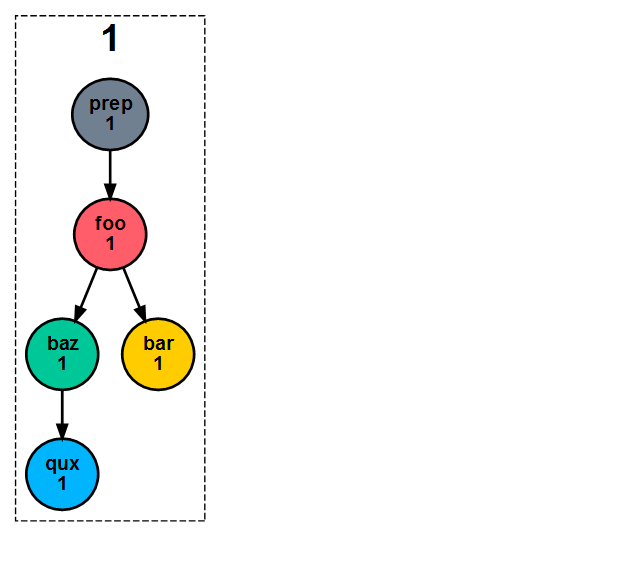
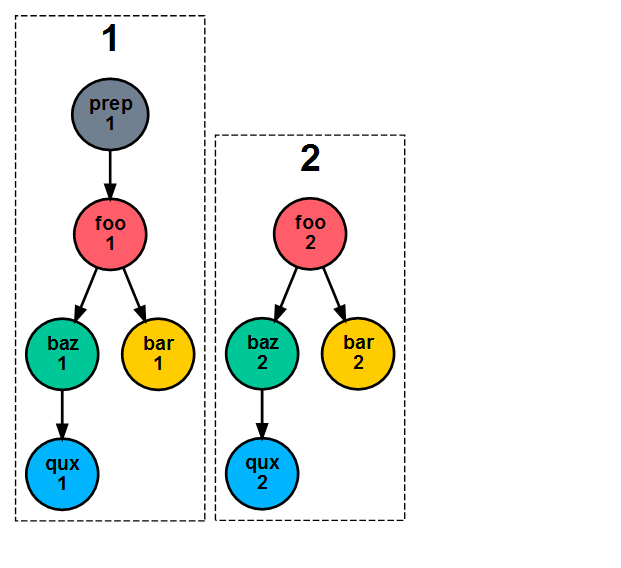
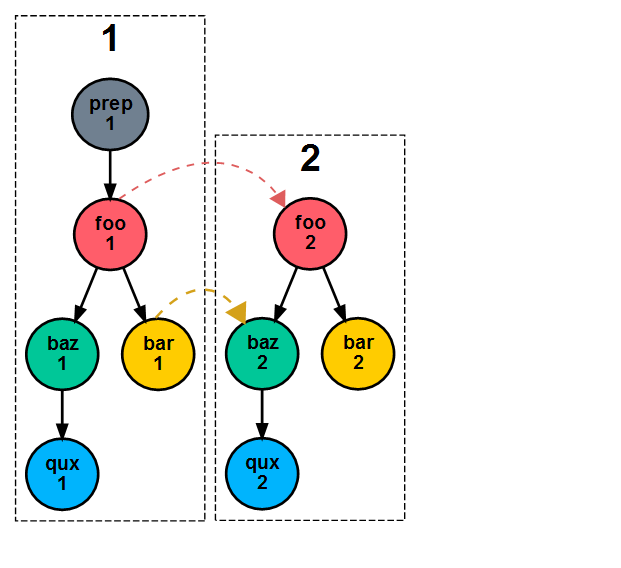
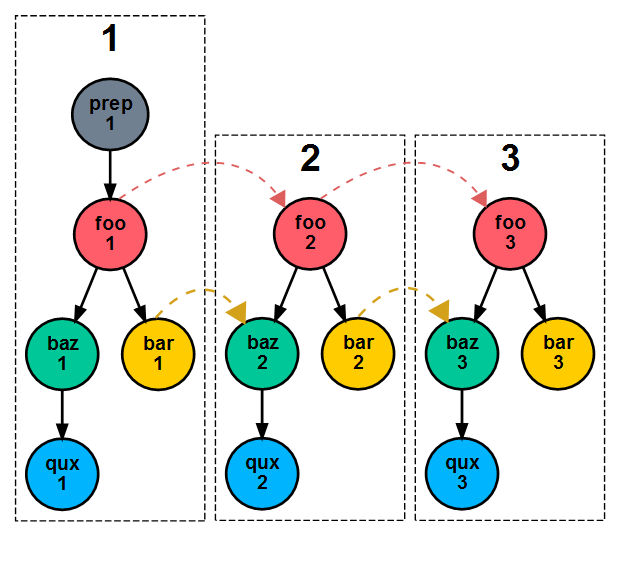
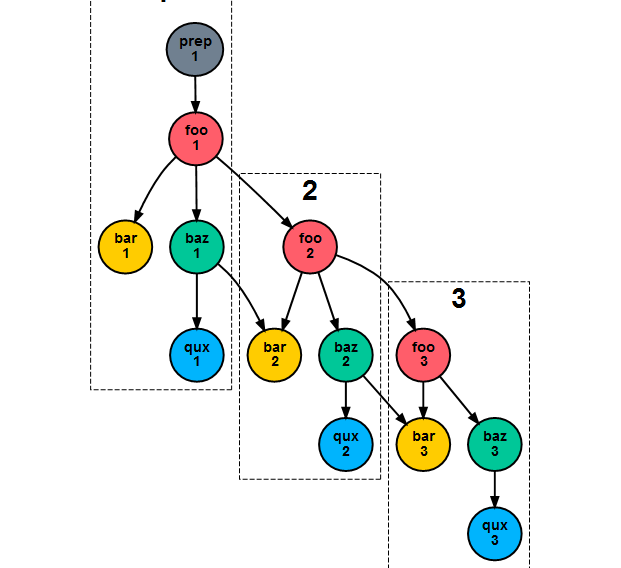
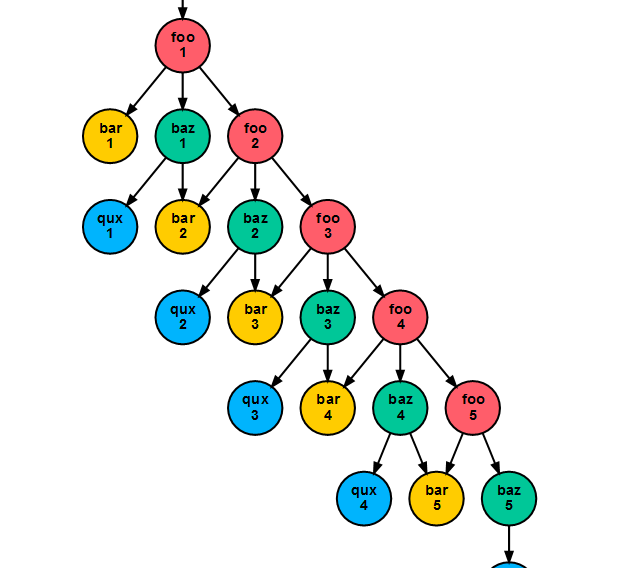
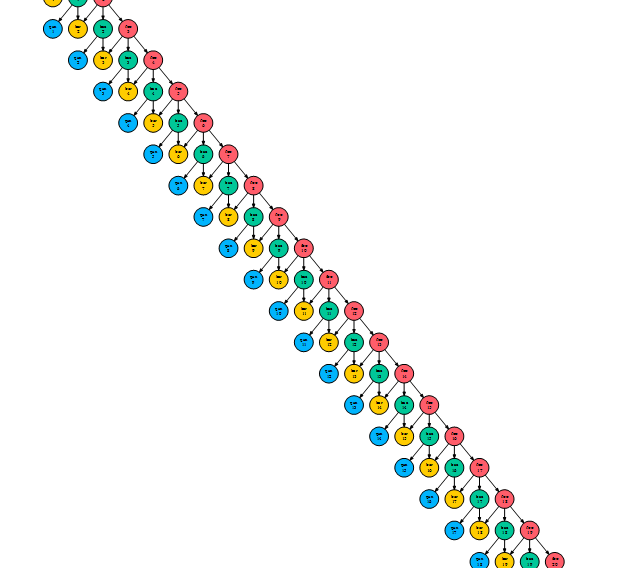

- repeat cycles...
- ...there's inter-cycle dependence between some task...
- ...which is technically no different to intra-cycle dependence...
- ...no need to label cycle points (boxes) as if they have global relevance...
- ... so you can see this is actually an infinite single workflow that happens to be composed of repeating tasks
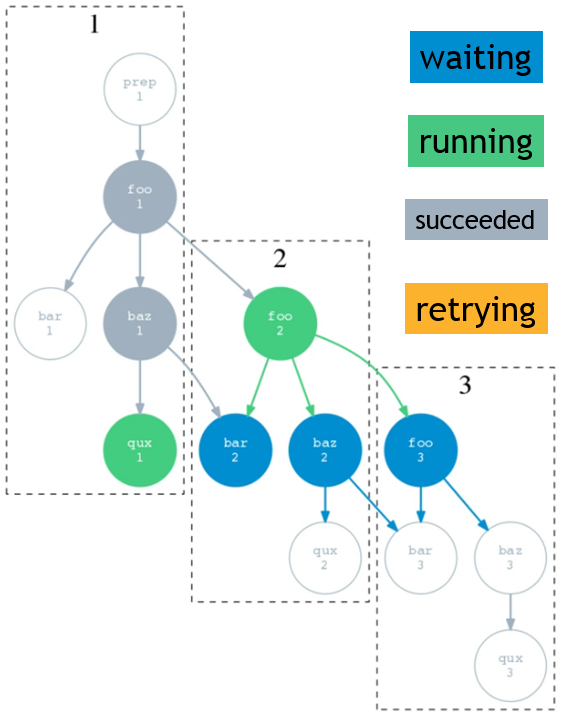
What's cycling needed for?
- clock-limited real time forecasting
- splitting a long simulation into short chunks
- iterative workflows (e.g. optimize model params)
- processing datasets as concurrently as possible
- classic pipelines!
- (and ... other kinds of repetitive processing)
- dynamic cycling is not strictly needed for small, short workflows.
- historically achieved (NWP) with sequential whole cycles.
What Cylc Is Like
- complex cycling model(*) workflows in HPC
- text config file (with programmatic templating)
- treat workflow definitions like source code
- economy of workflow definition: inheritance, cycling graph notation, templating
- light-weight, flexible, and general
- application agnostic: any script, or program
- move data around however you like
- ANY date-time or integer cycling sequences
- ETC...
Not currently well suited to "data-intensive" workflows
no magic sauce to obscure "what the scientist does"
A workflow is primarily a configuration of the workflow engine, and a config file is easier for most users and most use cases than programming to a Python API. However, ...!
ETC.: event handling, checkpointing, extreme restart, ...
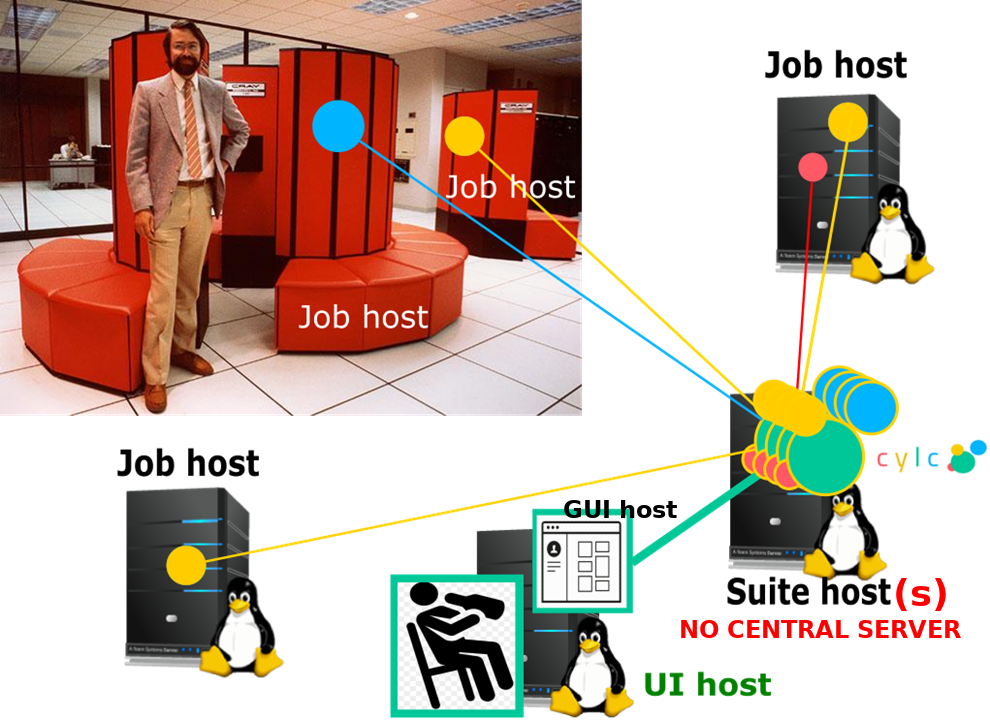
A powerful "unified" CLI
$ cylc --helpe.g. to re-trigger all failed tasks with name
get_* and cycle point 2020*, in suite
expt1 (leaving others alone):
$ cylc trigger expt1 2020*/get_*:failed 

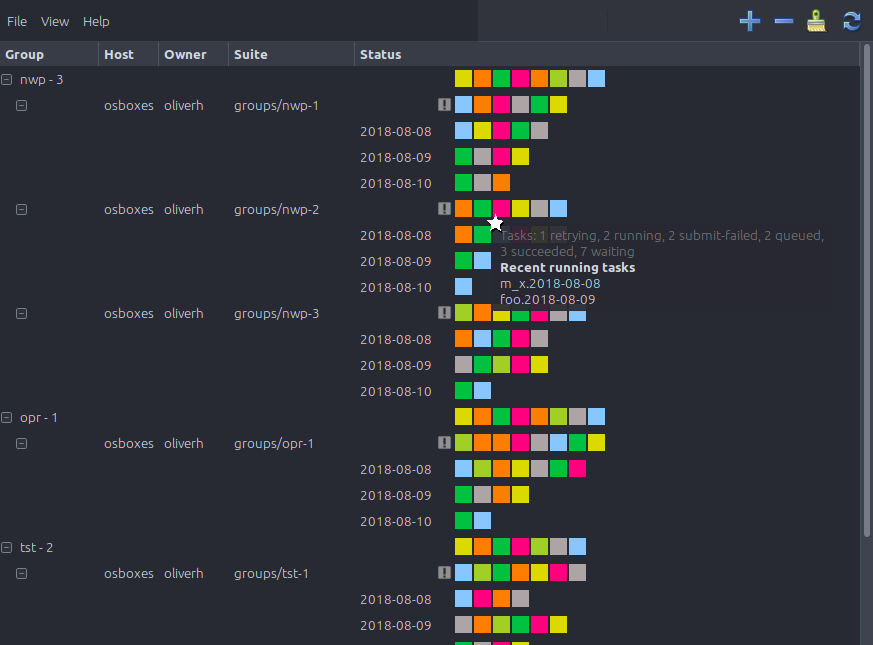
note dynamic filtering vs static SMS GUI
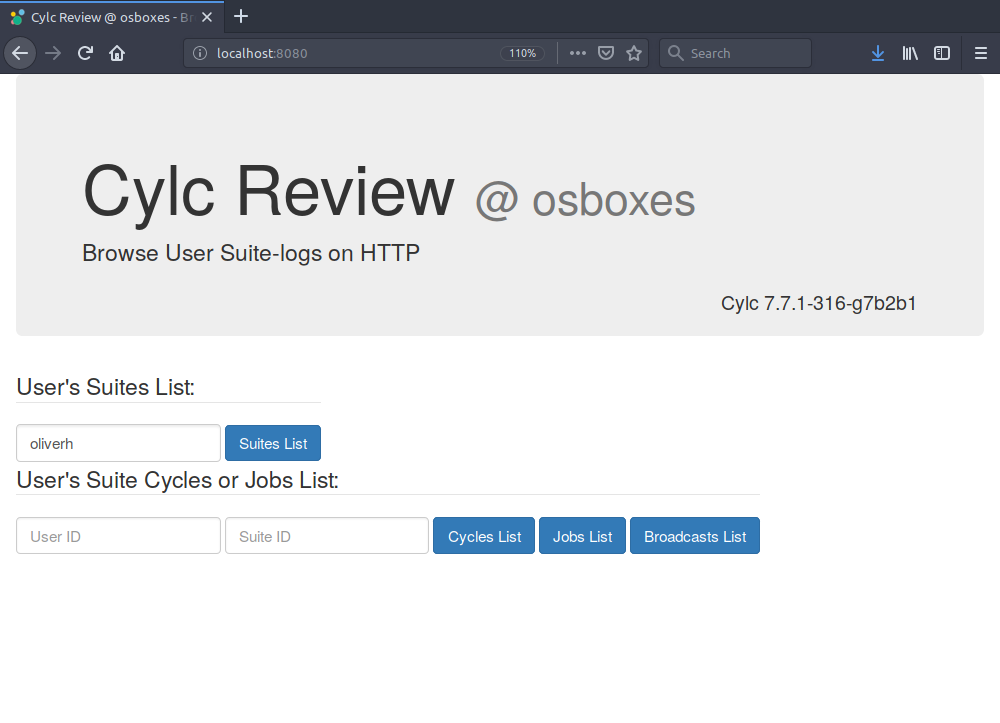
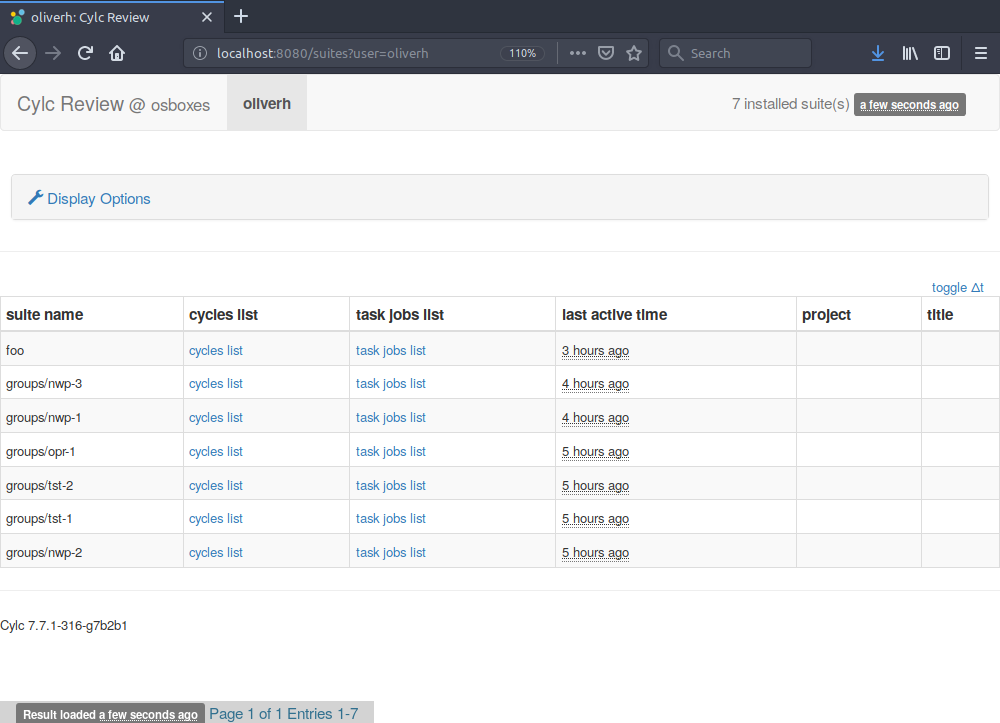

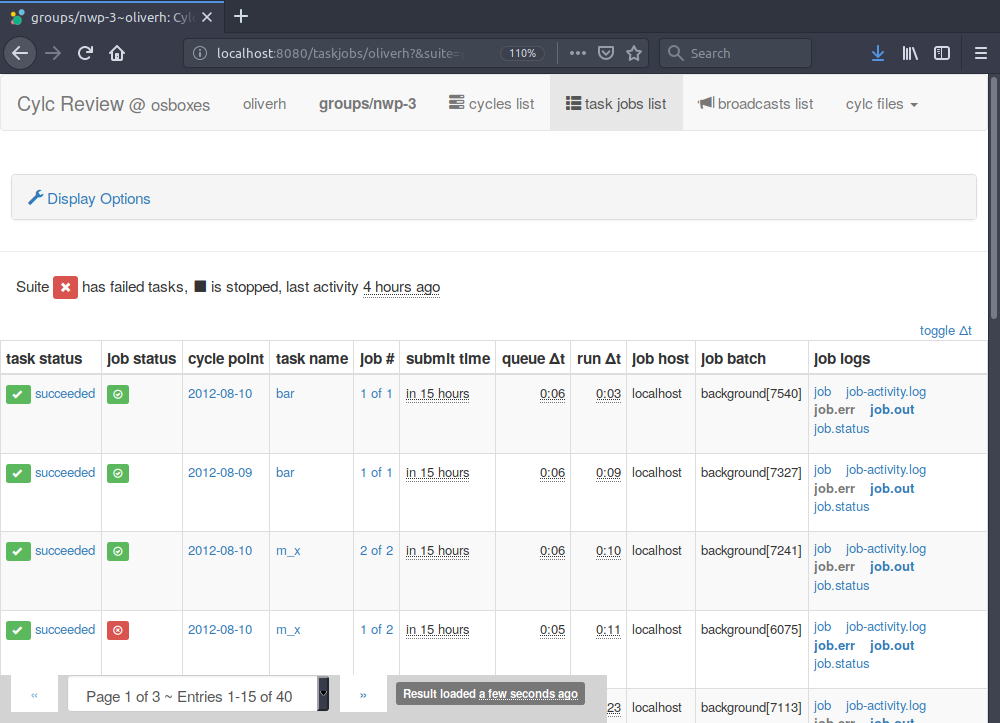
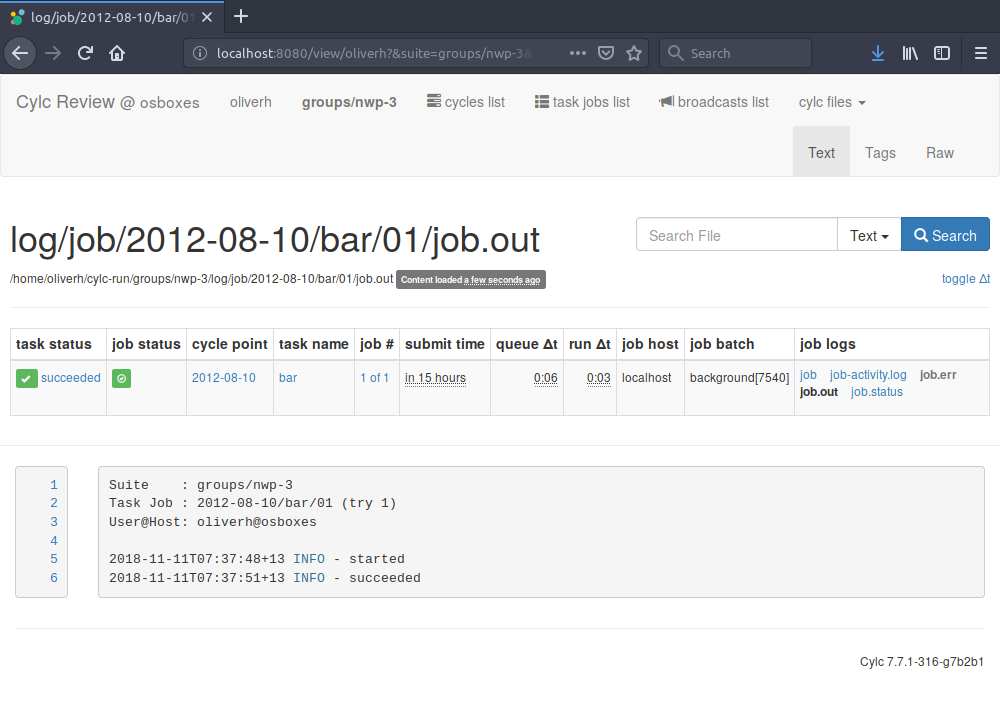
# Hello World! Plus
[scheduling]
[[dependencies]]
graph = "hello => farewell & goodbye"
# Hello World! Plus
[scheduling]
[[dependencies]]
graph = "hello => farewell & goodbye"
[runtime]
[[hello]]
script = echo "Hello World!"
# Hello World! Plus
[scheduling]
[[dependencies]]
graph = "hello => farewell & goodbye"
[runtime]
[[hello]]
script = echo "Hello World!"
[[[environment]]]
# ...
[[[remote]]]
host = hpc1.niwa.co.nz
[[[job]]]
batch system = PBS
# ...
# ...
# ...
- [runtime] is a multiple inheritance heirarchy for efficient sharing of all common settings
#!Jinja2
{% set SAY_BYE = false %}
[scheduling]
[[dependencies]]
graph = """hello
{% if SAY_BYE %}
=> goodbye & farewell
{% endif %}
"""
[runtime]
# ...
#!Jinja2
{% set SAY_BYE = true %}
[scheduling]
[[dependencies]]
graph = """hello
{% if SAY_BYE %}
=> goodbye & farewell
{% endif %}
"""
[runtime]
# ...
[[dependencies]]
graph = "pre => sim => post => done"
[[dependencies]]
graph = "pre => sim<M> => post<M> => done"
# with M = 1..5
[[dependencies]]
graph = "prep => init => sim => post => close => done"
[[dependencies]]
graph = "prep => init<R> => sim<R,M> => post<R,M> => close<R> => done"
# with M = a,b,c; and R = 1..3
[cylc]
cycle point format = %Y-%m
[scheduling]
initial cycle point = 2010-01
[[dependencies]]
[[[R1]]] # R1/^/P1M
graph = "prep => foo"
[cylc]
cycle point format = %Y-%m
[scheduling]
initial cycle point = 2010-01
[[dependencies]]
[[[R1]]]
graph = "prep => foo"
[[[P1M]]] # R/^/P1M
graph = """
foo[-P1M] => foo
foo => bar & baz => qux
"""
[cylc]
cycle point format = %Y-%m
[scheduling]
initial cycle point = 2010-01
[[dependencies]]
[[[R1]]]
graph = "prep => foo"
[[[P1M]]]
graph = """
foo[-P1M] => foo
foo => bar & baz => qux
"""
[[[R2/^+P2M/P1M]]]
graph = "baz & qux[-P2M] => boo"
other features
- optimal catch-up from delays
- robust inter-workflow triggering
- state checkpointing and magic restart
- general event handling
- external event triggers (NEW)
- suite auto-migration! (NEW)
cylc review- job log viewer (NEW)- production tested!
- ...
event handling: includes built-in aggregated emails
robust inter-workflow triggering: via suite DB not server (important for transient distributed suites)
production tested: recovery from hall failures

Features, Benefits, & Adoption Worldwide
(See FEATURES!)
no central server (distributed workflows)
- scales sideways (pool of Cylc servers/VMs)
- easy system upgrades (once suite at a time)
- light-weight, low admin
- easy for research teams and individuals
correct handling of cycling
- seamless transition from behind-the-clock, to clock-limited operation (and vice versa)
- seamless research-production transition
- very fast catch-up from delays (depending)
- job failures don't affect upstream tasks at all
research - production: also involves other aspects: configurable workflow definitions (switch bits on and off) - but primarily, don't need to run clock-limited in research.
economy of workflow definition
- cycling graph notation - infinite graphs
- multiple inheritance through task families
- share ALL common configuration
- mass triggering of task families
- Jinja2 templating
- parameterized tasks
(duplicated config is a maintenance risk)
ease of use
- download cylc(*) to your laptop, run it
- Cylc makes moderate workflows EASY
- to write
- to understand at a glance
- intuitive graph notation
- workflow graph visualization
- ...and large complex workflows possible
(*) caveat: software dependencies and PyGTK; proper pip and conda packaging soon
ease of use: note academic community and ESiWACE support
production support
- general event handling (incl. aggregate emails)
- robust inter-workflow triggering(*)
- robust checkpoint restart
- automigration! (NEW)
- multi-suite monitoring
- products of the Altair BOM project!
and finally ...
- active Open Source project
- commercial support and packaging from Altair!

Features, Benefits, & Adoption Worldwide

lights-out operation since 2011; 25 inter-dependent model suites (X 2)

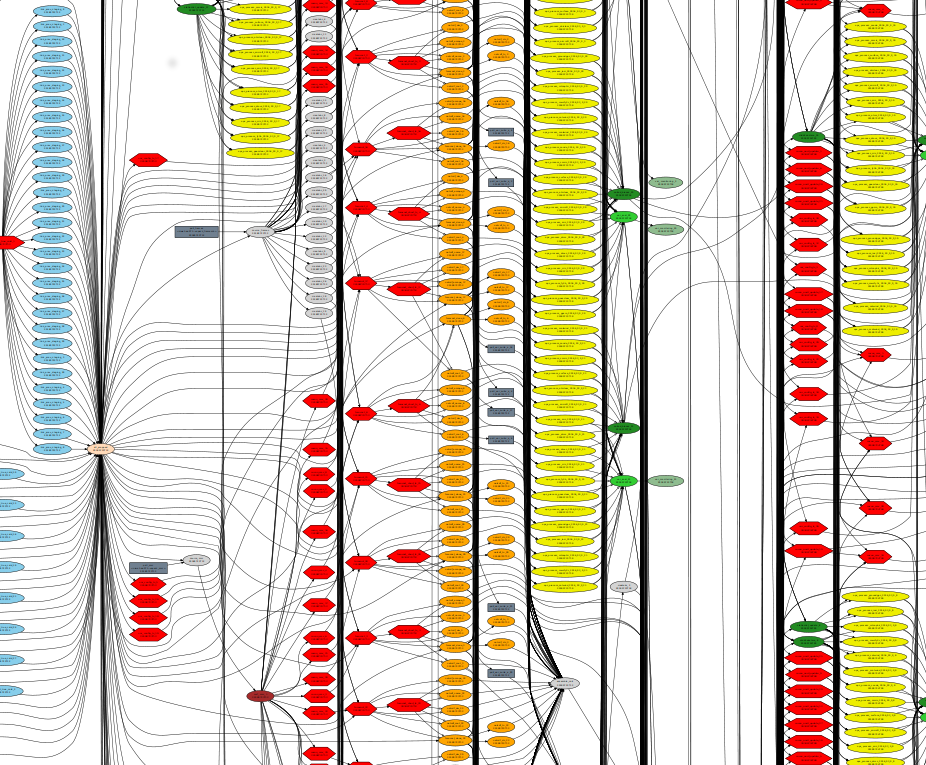
- 3 cycles of a small deterministic regional NWP suite. Obs processing tasks in yellow. Atmospheric model red, plus DA and other pre and post-processing tasks A few tasks ... generates thousands of products from a few large model output files.
- ... ~45 tasks (3 cycles)
- ... as a 10-member ensemble, ~450 tasks (3 cycles)
- ... as a 30-member ensemble, ~1300 tasks (3 cycles)



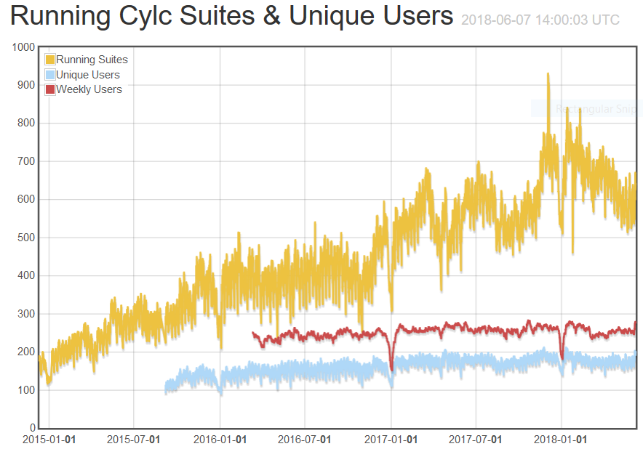

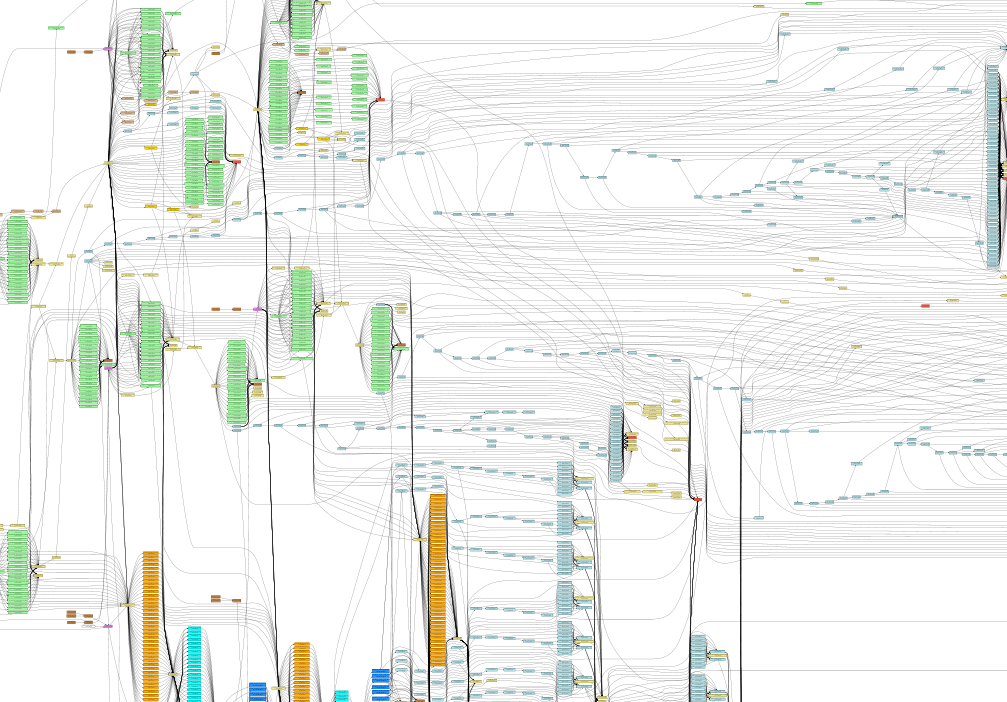
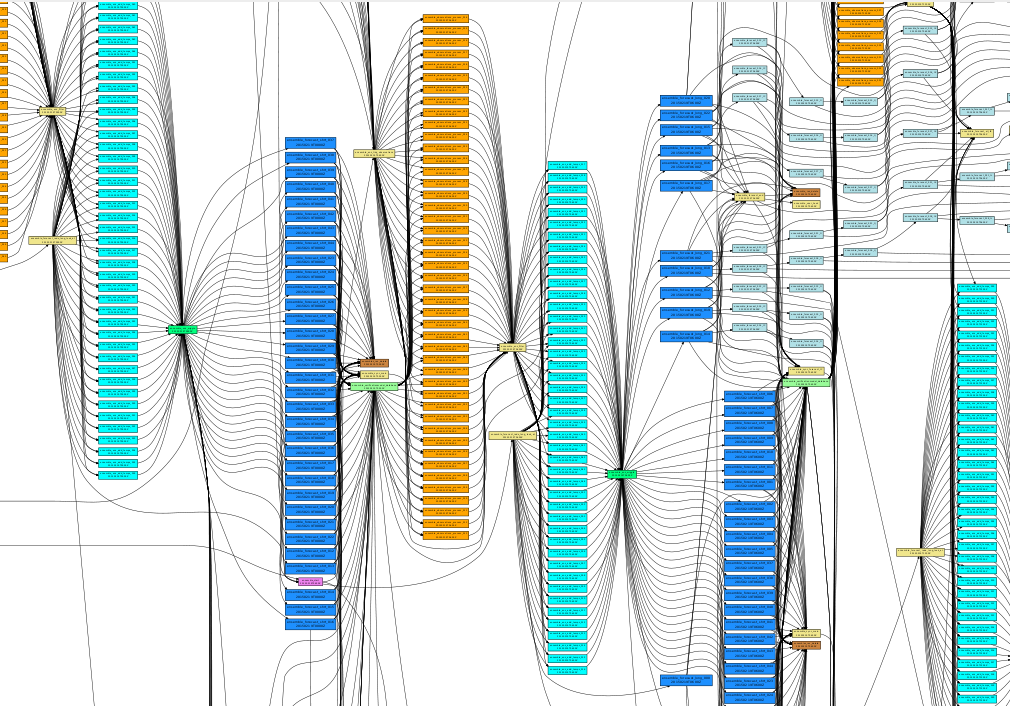
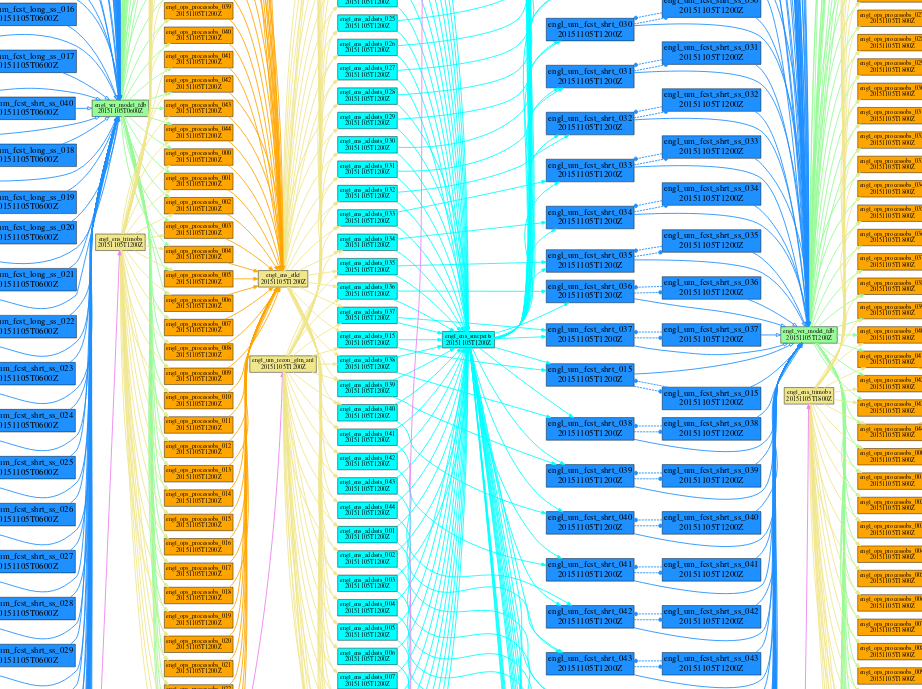

Features, Benefits, and Adoption Worldwide =====ROADMAP=====
UK Met Office Exascale Program
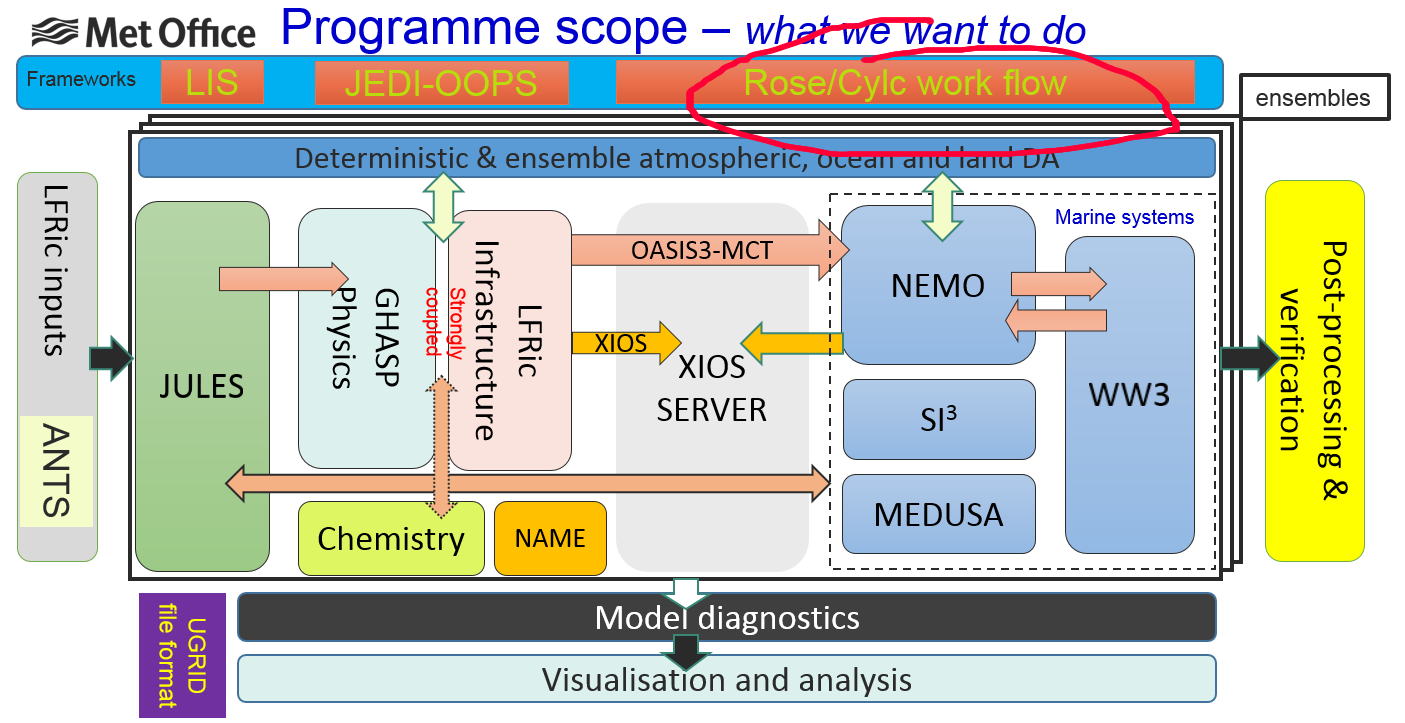

This is a technical necessity, to survive into the exascale era!
Python 3, Web GUI
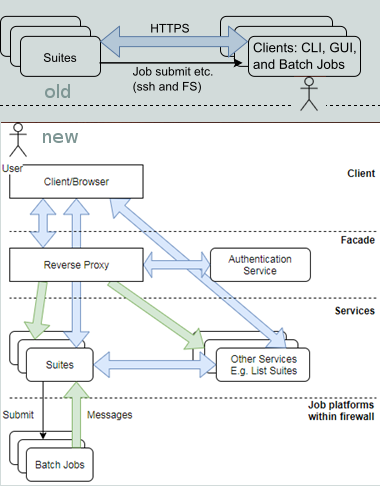
- top priority
- Python 2 and PyGTK near end-of-life
- web GUI work starting
- need new architecture!
Meeting Exascale Challenges
An outline of some potential pathways for future development
 Slides Credit: Oliver Sanders
Slides Credit: Oliver Sanders
Met Office (UK)
New Cylc GUI


Combine gscan & gcylc
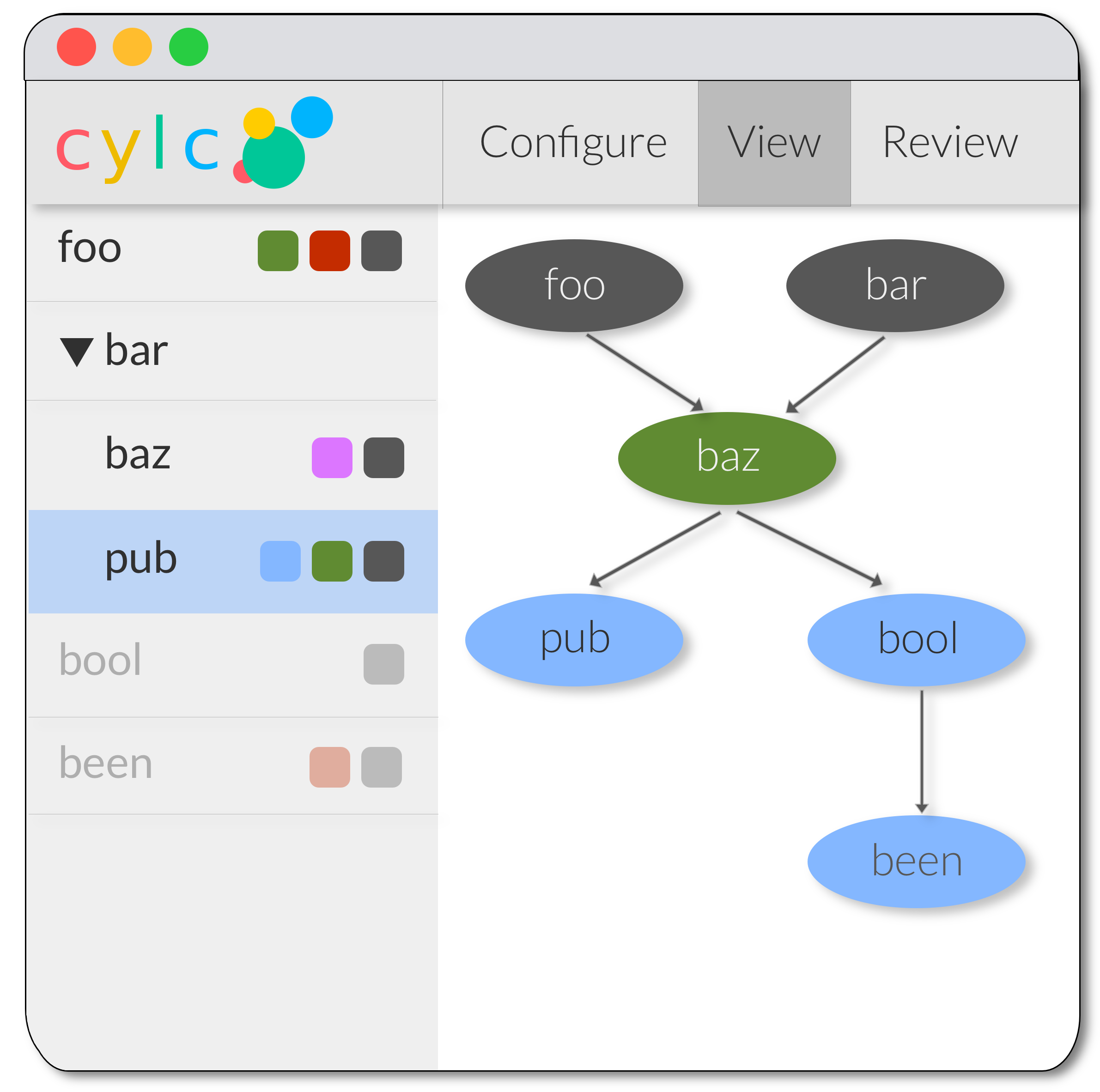
View N Edges To Selected Node
Alternative Views

- Gant chart
- Adjacency matrix
- Other?
The Modularity Problem
- We can split the suite.rc into multiple files but...
- Suites are monolithic
- Developing components in isolation is difficult
It's hard to incorporate a module into a workflow

Ideally we would write dependencies to/from the module itself rather than the tasks within it
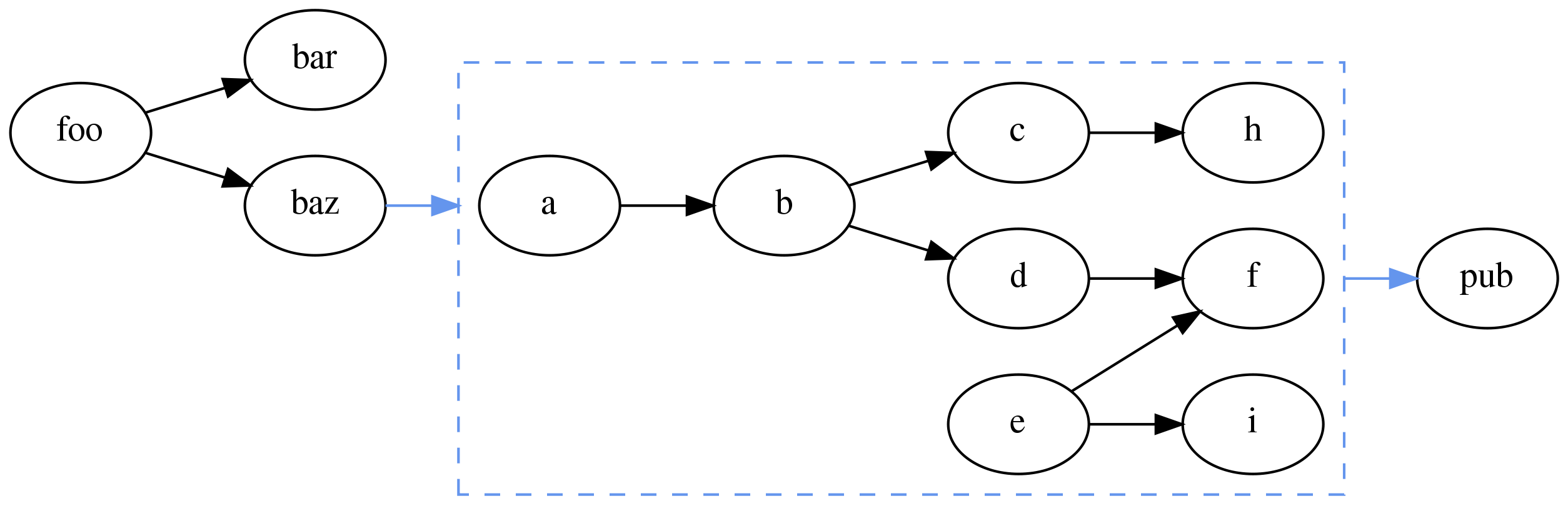
Workflows could be represented as tasks

foo => baz => module<p> => pub
Python API
Python > Jinja2
Illustrative examples Python could provide Cylc:
bar = cylc.Task('myscript')
cylc.run(
foo >> bar >> baz
)Use Python data structures as Cylc parameters:
animal = cylc.Parameter({
'cat': {'lives': 9, 'memory': 2},
'dog': {'lives': 1, 'memory': 10}
})
baz = cylc.TaskArray('run-baz',
args=('--animal', animal),
env={'N_LIVES': animal['lives']}),
directives={'--mem': animal['memory']}
)Use Python to write Cylc modules:
import my_component
graph = cylc.graph(
foo >> bar >> my_component >> baz,
my_component.pub >> qux
)Alternative Scheduling Paradigms
foo => bar => baz
foo:
out: a
bar:
in: a
out: b
baz:
in: a, b
out: c
- Compute resource dependency?
- Others?
Scaling With Dependencies
Cylc can currently scale to tens of thousands of tasks and dependencies
But there are limitations, for example:
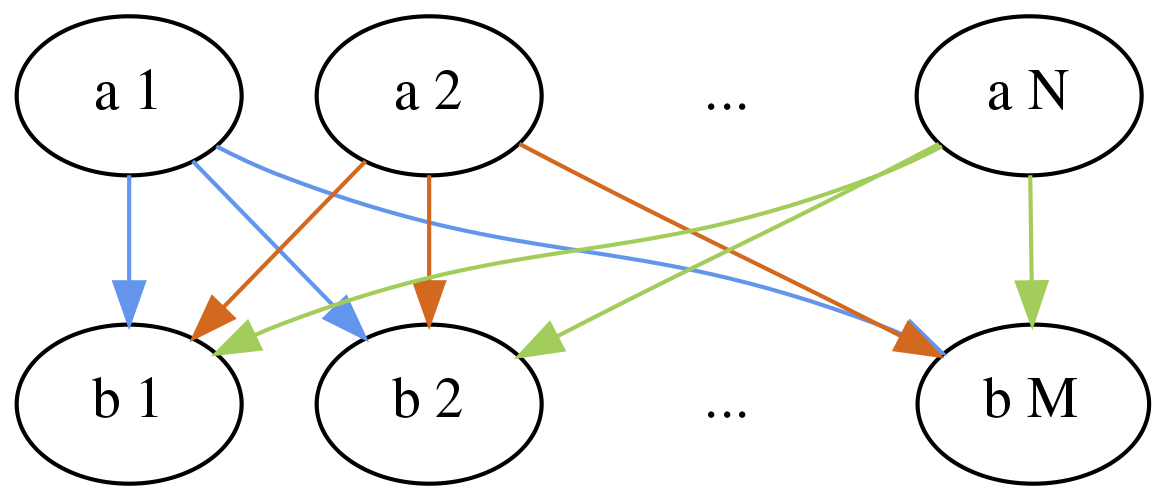
Many to many triggers result in NxM dependencies

Cylc should be able to represent this as a single dependency
The scheduling algorithm currently iterates over a "pool" of tasks.
We plan to re-write the scheduler using an event driven approach.
This should make Cylc more efficient and flexible model solving problems like this.
Kernel - Shell Architecture
Working towards a leaner Cylc we plan to separate the codebase into a Kernel - Shell model
Shell |
Kernel |
| User Commands | Scheduler |
| Suite Configuration | Job Submission |
Batching Jobs
Combining multiple jobs to run in a single job submission.

Arbitrary Batching
A lightweight Cylc kernel could be used to execute a workflow within a job submission.
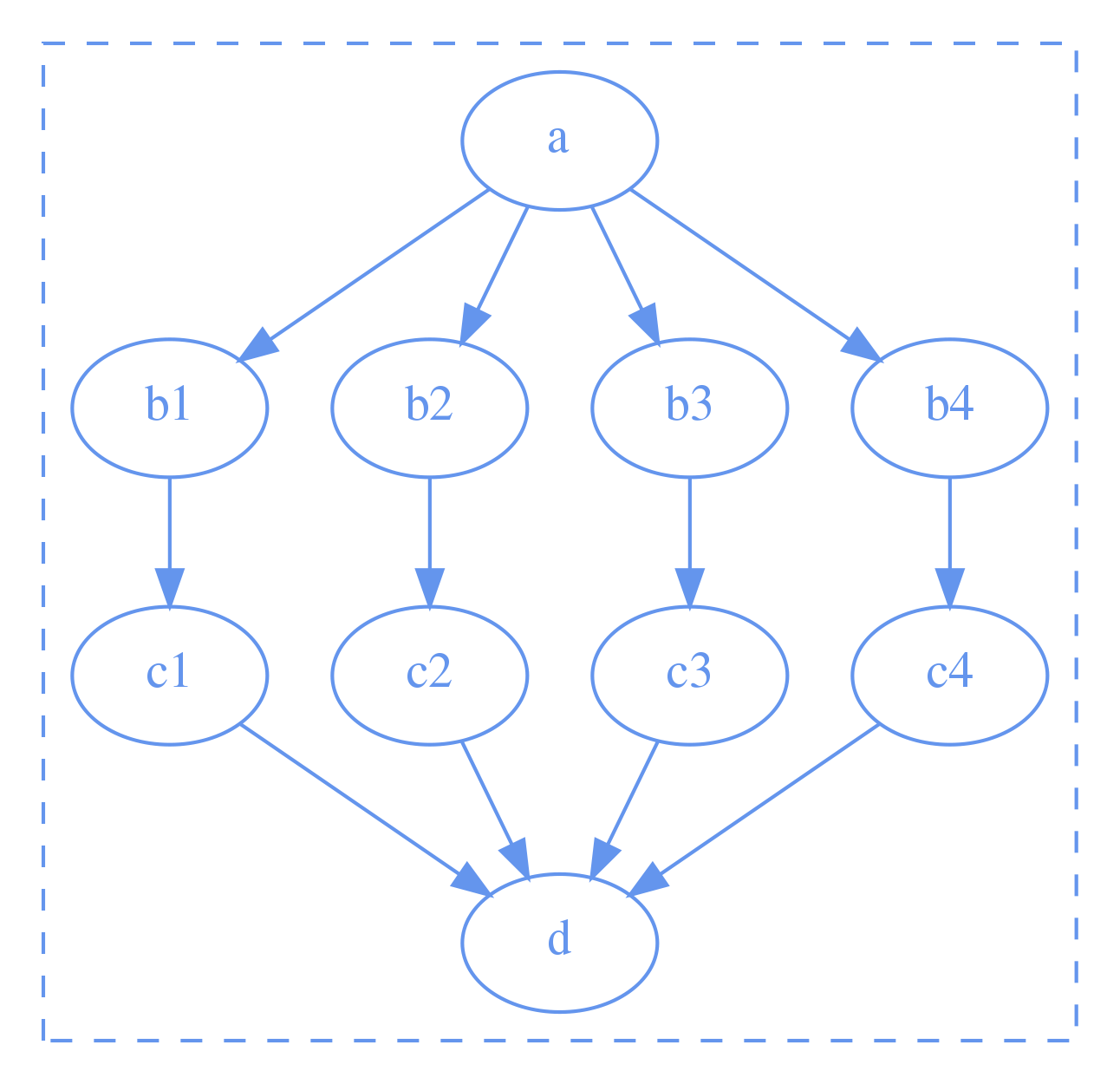
- The same Cylc scheduling algorithm
- No need for job submission
- Different approach to log / output files
Future Challenges
- Container technology
- Computing in the cloud
- File system usage


